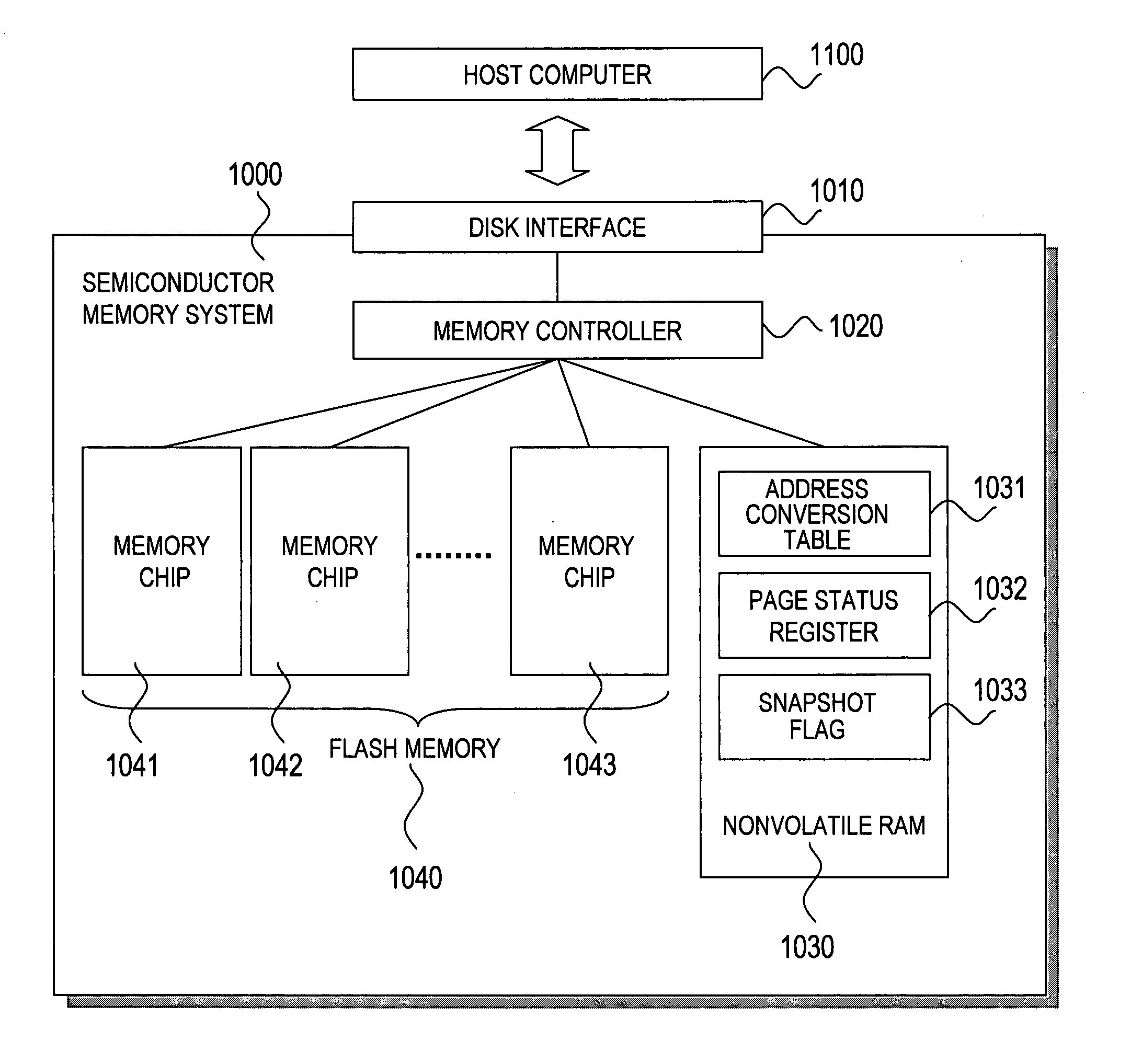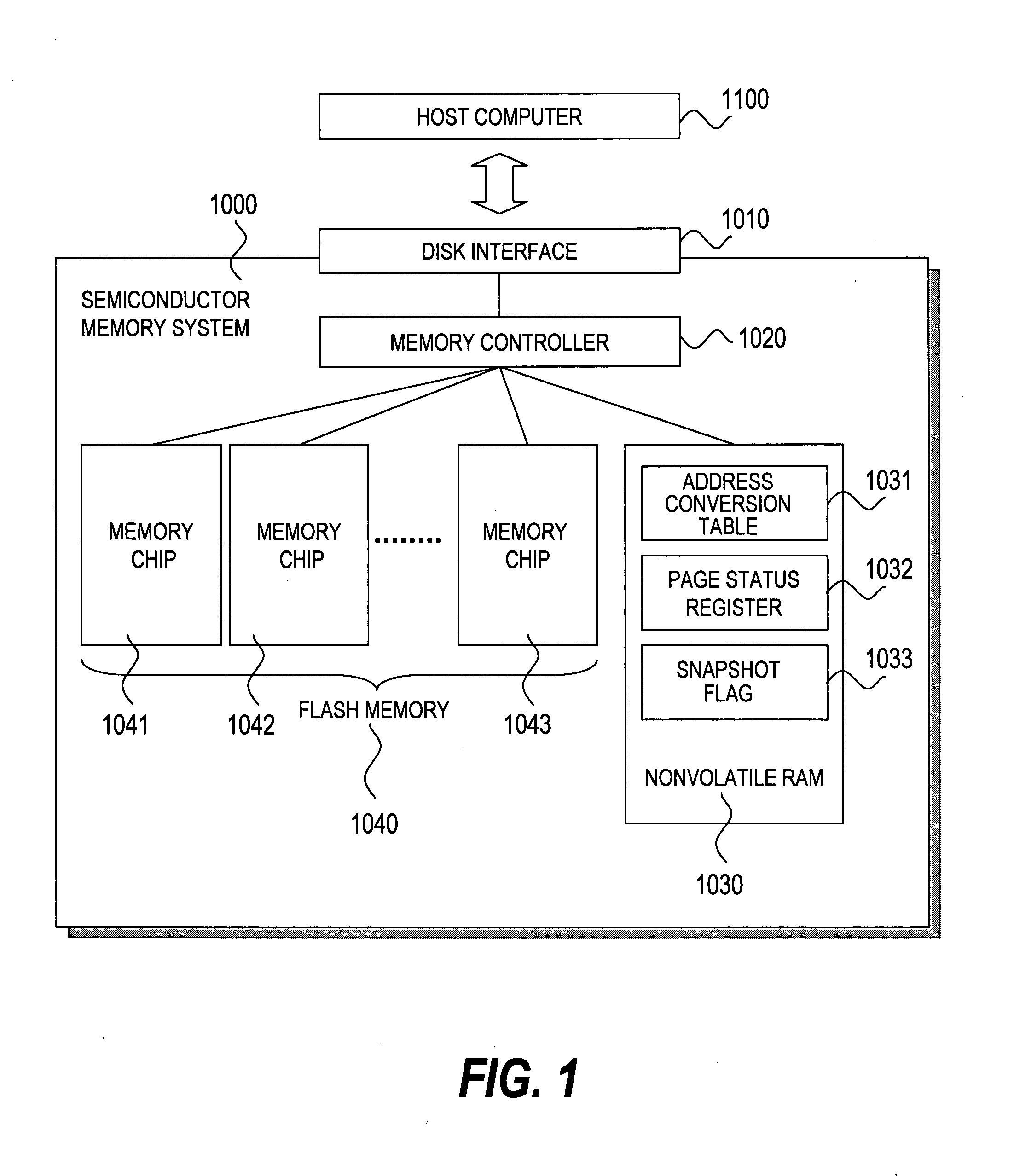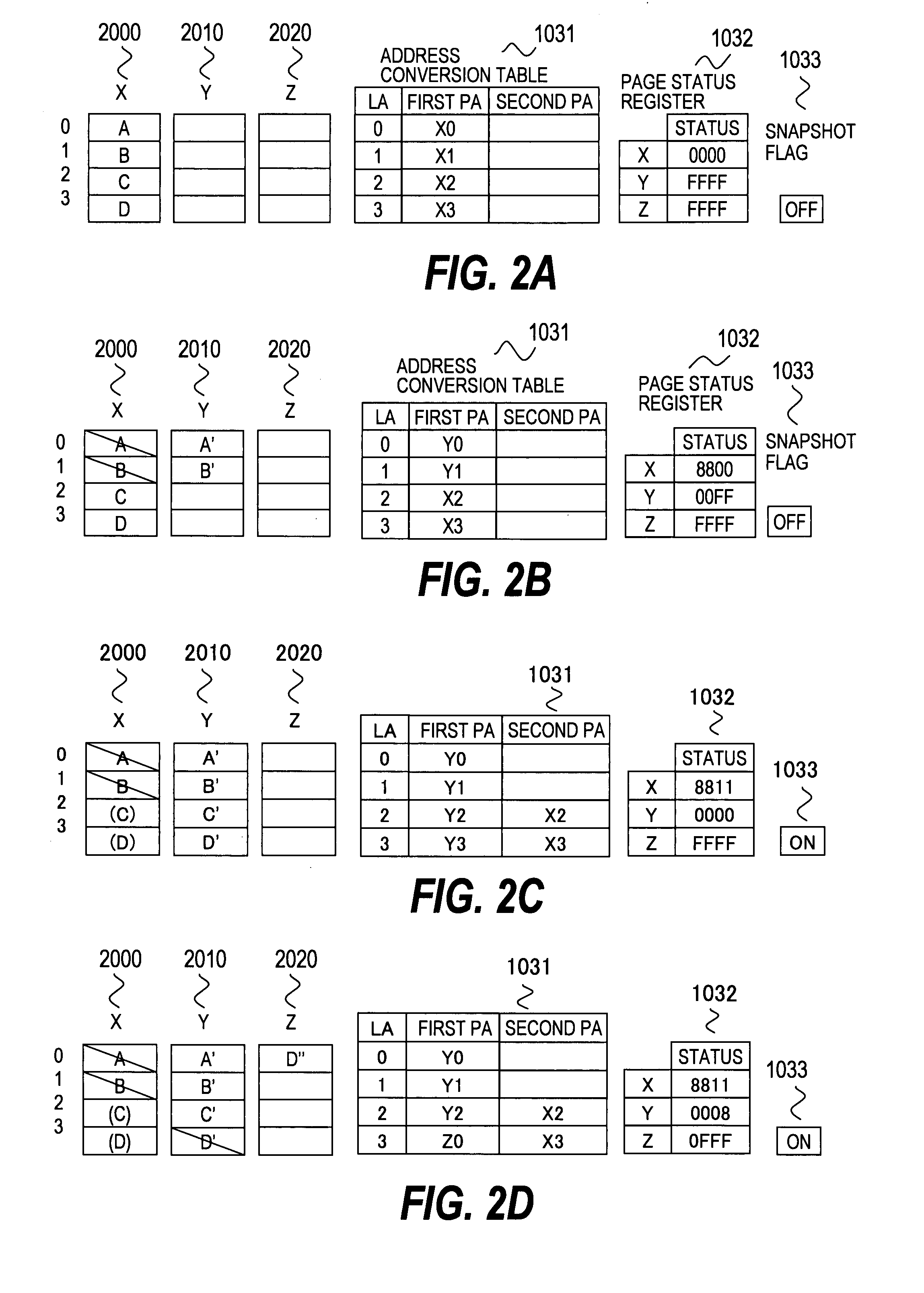Semiconductor memory system having a snapshot function
a memory system and snapshot technology, applied in the field of semiconductor memory systems, can solve the problems of increasing unable to access data, and unable to enable effective utilization, so as to reduce the load on the recording medium controller and enhance the usability of the semiconductor memory system
- Summary
- Abstract
- Description
- Claims
- Application Information
AI Technical Summary
Benefits of technology
Problems solved by technology
Method used
Image
Examples
second embodiment
[0106]A second embodiment of this invention discloses a semiconductor memory system which can manage snapshot data of three generations at the maximum. According to the first embodiment, the snapshot data of a plurality of generations can be managed. However, the second embodiment is different from the first embodiment in that configurations and a using method of the address conversion table 1031, the page status register 1032, and the snapshot flag 1033 are different from those of the first embodiment, and the memory controller 1020 interprets a command for individually releasing a designated generation number among a plurality of obtained snapshots. Other components are the same as those of the first embodiment.
[0107]A simple internal configuration of the semiconductor memory system 1000 to which this invention is applied is shown in FIG. 1 as in the case of the first embodiment. Portions different from the first embodiment will be described below.
[0108]Five types of commands inte...
PUM
 Login to View More
Login to View More Abstract
Description
Claims
Application Information
 Login to View More
Login to View More - R&D
- Intellectual Property
- Life Sciences
- Materials
- Tech Scout
- Unparalleled Data Quality
- Higher Quality Content
- 60% Fewer Hallucinations
Browse by: Latest US Patents, China's latest patents, Technical Efficacy Thesaurus, Application Domain, Technology Topic, Popular Technical Reports.
© 2025 PatSnap. All rights reserved.Legal|Privacy policy|Modern Slavery Act Transparency Statement|Sitemap|About US| Contact US: help@patsnap.com



